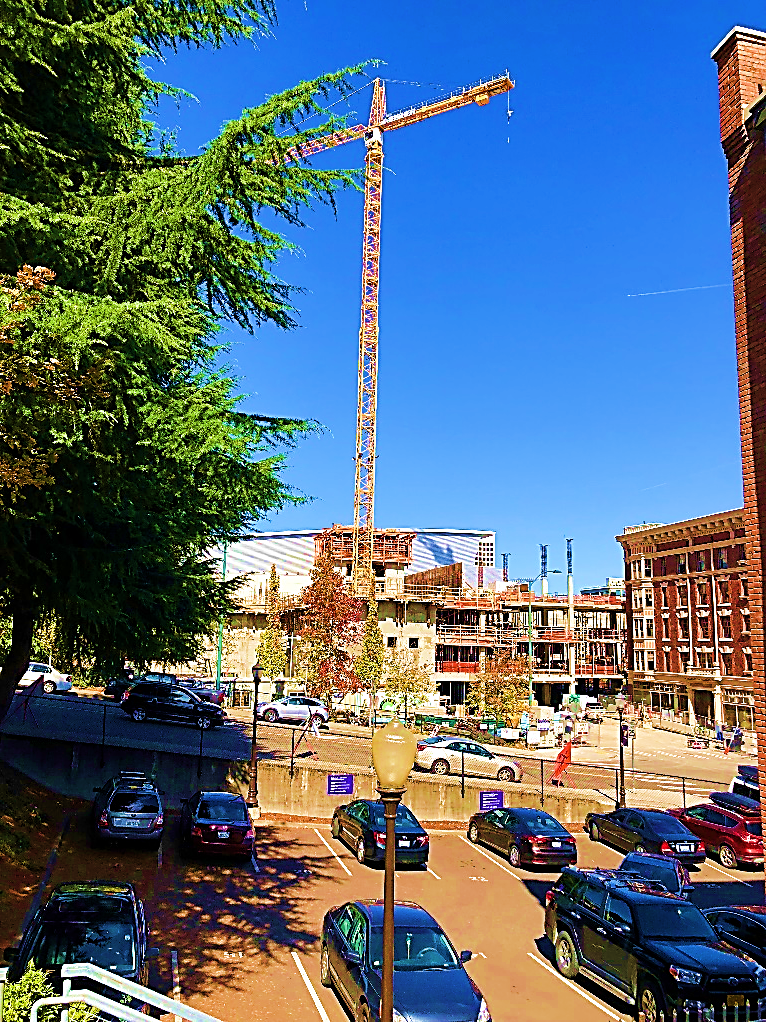Yonn Dierwechter , PhD, is Professor of Urban Studies, University of Washington, Tacoma. His recent books include Smart Transitions in City-Regionalism (Routledge, 2018), coauthored with Tassilo Herrschel, and The Urbanization of Green Internationalism (2018, Palgrave).
Consider this (not entirely) random list of cities: Malmo, Oakland, Stellenbosch, Porto, Geelong, Long Beach, Lyon, Chicago, Edmonton, Nuremberg, Vevey, Tacoma.
Obviously, a great deal distinguishes one from another. Some (e.g. Chicago, Lyon) are indubitably large cities; others (e.g. Vevey) may not be cities at all—or at least not for many RSA members. In truth, each of us probably carries around a mental and emotional metric of urbanism as we move through, experience, and assess the qualities of particular places. Is this place sufficiently big, dense and/or diverse—or is it a village, a town, a hamlet? Is there a sufficient sense of economic and cultural specialization or cosmopolitan broadmindedness? Some of the fuzziness can be worn off, of course, when we deploy quantitative metrics; but different census ministries around the world define thresholds for an “urban” place rather differently. Numbers are sometimes arbitrary, too. Places have traits, but those traits are also relationships.
Let us therefore suggest, for argument’s sake, that each of the above places is a city. Are they also second cities? Perhaps they are, but to what places are they “second”? And how does that matter? Big City Chicago is a second city in the United States when compared with New York City, just as Lyon is France’s own “second city” when compared with Paris. The same goes for Porto in Portugal. Oakland and Long Beach, however, are second cities only to San Francisco and Los Angeles, respectively– their more famous “regional” neighbors with whom they (awkwardly) share borders, commuters, and territorial histories. And what about Geelong, located 75 kilometers south of Melbourne, or Tacoma, located 55 kilometers south of Seattle? In Australia, as Leonie Pearson suggests in her previous blog post, Geelong (unlike Melbourne) is seen nationally as a “regional city.” As she further observes, there are all sorts of policy questions—from ICT to project experimentation– where defining places as “regional cities” within a national urban system makes sense. But there is something else here as well, at least for me and for others: does Geelong rather like Tacoma — and perhaps Long Beach, Oakland, Stellenbosch, or Malmo (since the Oresund Bridge) — furthermore exhibit a “regional second city” quality not easily explained or captured by extant frameworks and modes of analysis in either urban affairs or regional studies? It’s worth finding out.
I visited Geelong a few years ago; I was struck by how eerily similar it was to Tacoma—and especially how its identity in the national (and global) urban system was being shaped by (and with) a larger, trendier neighbor to its north. Both Geelong and Tacoma are embedded within a wider but still functionally integrated city-regional complex disproportionately shaped by a bigger (more famous) city. Yet neither of these two places is an “edge city” or a “suburban city” of that same big city. Moreover, it is not yet clear that the actually-existing edge cities or urbanized suburbs across Greater Seattle (e.g. Bellevue, Redmond) or Greater Melbourne (e.g. Frankston) are in fact “regional second cities” in this same sense. But why? And what of it?

Renewal of a Regional Second city? Tacoma, Washington (USA)
Within the context of these kinds of themes, two of my university colleagues, Mark Pendras and Charles Williams, organized a small and highly stimulating workshop on August 16-17, 2018 at the University of Washington, Tacoma, with scholars in urban affairs and regional studies from Holland, Switzerland, Portugal, Ohio, and California. Participants explored the definitions, concepts, and methodologies of a so-called “Regional Second Cities” agenda. For Pendras and Williams, regional second cities (perhaps like Tacoma and Geelong) “fuel, compete with, and are otherwise relationally connected to larger and/or putatively more ‘successful’ neighboring cities;” moreover, they argued in the workshop for “more relational approaches that identify and theorize connections between the different experiences and conditions found in neighboring cities.” In response to their opening framework, Evert Meijers and Rodrigo Cardoso from TU-Delft addressed the conceptual and analytical value of “regional second cities” by moving beyond conventional urban growth theories through Alonzo’s original concept of “borrowed size” as well as their previous work on agglomeration shadows. Heike Mayer from Universität Bern considered regional second cities in the Swiss context through the “positioning strategies” of small and medium-sized towns. Joanna Ganning from Cleveland State University interrogated the effects of a (statistically-defined) “primary Principal City” on the “secondary Principal Cities” in city-regional complexes, calling for more research on why sectoral composition varies between the two. Meanwhile, Gary Hytrek from Cal. State University Long Beach investigated, from a very different angle, how regional second city status might influence local (and regional) labor organizing and collective action problems.
A good workshop indeed. As an urban scholar interested in the planning, spatialities, and governance of city-regions, I thus look forward to where this particular research program will now go—and especially to how the “regional second city” concept might directly stimulate other research questions of general interest to RSA members.
Are you currently involved with regional research, policy, and development, and want to elaborate your ideas in a different medium? The Regional Studies Association is now accepting articles for their online blog. For more information, contact the Blog Editor at RSABlog@regionalstudies.org.